For the past 60 years, The Pennsylvania Sports Hall of Fame has honored and inducted over 780 incredible men and women who have made a lasting impact in Pennsylvania through extraordinary athletic achievement and contributions. Whether these activities have been achieved on or off the field, we honor them. Through our future virtual museum, we educate and celebrate their achievements for years to come.
The Pennsylvania Sports Hall of Fame’s 2025 Induction Ceremony and Dinner is Saturday, October 18, 2025 at 6:00 pm at the Sheraton Station Square Hotel.
William Joseph "Willie" Mosconi
Deceased
Year Inducted:1968

-
Willie Mosconi was a professional pool player from Philadelphia. Between 1941 and 1957, he won the World Straight Pool Championship, an unmatched fifteen times. He and Minnesota Fats had many legendary matchups during their careers.
Curt Simmons
Deceased
Year Inducted:1968

-

While attending Whitehall High School he led his team to three straight league title and the Coplay American Legion team to two Pennsylvania crowns. The Phillies signed Curt to a $65,000 bonus (one of the highest ever awarded at that time). Simmons won 17 of 25 decisions during 1950 leading the Phillies to a National League Championship. With the out break of the Korean War, Simmons was called to active duty with only a month remaining in the campaign.
Simmons also missed the 1951 season while in the military. He returned in 1952 to win 14 games, post a stellar 2.82 ERA, and lead the majors with six shutouts. Curt continued to pitch into the late 1950s although for a losing ball club. He was stricken with a sore arm in 1960 and released by the Phillies. Signed as a free agent by the St Louis Cardinal, he began a comeback that culminated in 15 and 18 game winning seasons in 1963 and 1964. He appeared in the 1964 World Series against the Yankees and although losing his only decision compiled a 2.51 ERA. Over twenty years, his record was 193-182. In 569 games pitched and 3,348 innings; Simmons allowed 3,313 hits, recorded 1,697 strikeouts and 1,063 walks.
Charles "Charley" Trippi
Deceased
Year Inducted:1968

-

Pittston High School-All-State in football
University of Georgia-halfback
All-American, won Sugar Bowl
1946 won Maxwell and Walter Camp Trophies as college football’s MVP
Signed four-year professional contract with Chicago Cardinals
All Pro with Cardinals, 1947 led them to World Title his first season
1959 inducted into Pro Football’s Hall of Fame
Inducted into PA Sports Hall of Fame in 1968
Charles Louis Trippi (born December 14, 1921) played professionally for the Chicago Cardinals of the National Football League (NFL) from 1947 to 1955. Although primarily a running back, his versatility allowed him to fill a multitude of roles over his career, including quarterback, defensive back, punter, and return specialist. A "quintuple-threat", Trippi was adept at running, catching, passing, punting, and defense.
Trippi attended the University of Georgia, where he played college football for the Georgia Bulldogs from 1942 to 1946, with an interlude in 1944 while serving in the military during World War II. As a sophomore, he guided Georgia to victory in the 1943 Rose Bowl and was named the game's most valuable player. As a senior in 1946, he won the Maxwell Award as the nation's most outstanding college football player, was named the Southeastern Conference's player of the year, and earned unanimous first-team All-America recognition.
Drafted first overall by the Cardinals as a "future pick" in the 1945 NFL Draft, Trippi was also pursued by the New York Yankees of the All-America Football Conference (AAFC) as well as multiple professional baseball teams. He ultimately signed a record $100,000 contract with the Cardinals. As a rookie, Trippi led Chicago's "Million Dollar Backfield" to victory in the 1947 NFL Championship Game. By the time he retired he had compiled the most yards of total offense by a player in NFL history. Trippi was inducted into the College Football Hall of Fame in 1959 and the Pro Football Hall of Fame and the PA Sports Hall of Fame in 1968.
Trippi is the oldest living member of the Pro Football Hall of Fame, the oldest living first overall NFL draft pick, and one of the oldest living former American football players. He and his wife, Nell, reside in Hazleton. They have two children, Lt. Gregory Saul, USN, and Mrs. Janet Curilla.
Lloyd James “Little Poison,” Waner
Deceased
Year Inducted:1968

-
(March 16, 1906 – July 22, 1982) Lloyd nicknamed “Little Poison,” was a big-league center fielder. His small stature at 5 ft 9 in (1.75 m) and 132 pounds (68 kg) made him one of the smallest players of his era. Along with his brother, Paul Waner, he anchored the Pittsburgh Pirates outfield throughout the 1920s and 1930s. After brief stints with four other teams (Braves, Reds, Phillies, Dodgers) late in his career, Waner retired as a Pirate. Waner finished with a batting average over .300 in ten seasons. He earned a selection to the All-Star game in 1938. Lloyd with 2,459 hits and Paul Waner with 3,152 hits set the record for career hits by brothers in major league baseball. Lloyd was elected into the National Baseball Hall of Fame by the Veterans Committee in 1967. He worked as a scout for the Pirates and the Baltimore Orioles after retiring as a player.
Ferdinand Henry John Fritzie Zivic
Deceased
Year Inducted:1968

-
Ferdinand Henry John (Fritzie) Zivcich (Zivic) was an American boxer of Croatian descent who held the World Welterweight Championship from October 4, 1040 until July 29, 1941. As a young man, he followed the example of his four elder brothers who boxed and became known as the “Fighting Zivics”. He lost to Billy Conn, 1939 World Light-Heavyweight Champion, before 5,163 In a ten-round split decision at the Duquesne Gardens in Pittsburgh. In January 1939, Zivic defeated Jackie Burke, former Utah Intermountain and Pacific Southwest Welter-Weight title holder in 1939 and avenged a loss to former Junior Welterweight Champ Johnny Judick with a sixth round knockout. He defeated another Pittsburgh boxer, Sammy Angott in an elimination match to determine who would face Henry Armstrong for the World Welterweight Title noted above. Fritzie received a $3,200 Purse for his win, his biggest ever.
Arley Wilbur "Will" Cooper
Deceased
Year Inducted:1967
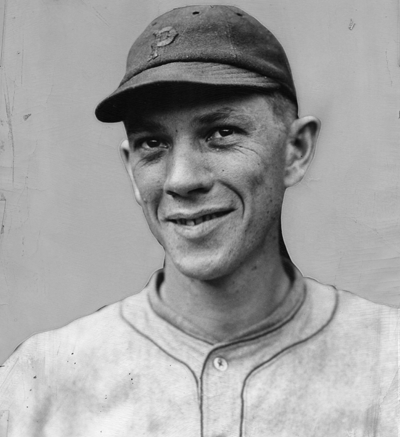
-
(February 24, 1892 – August 7, 1973) Will was a big-league starting pitcher who played most of his career for the Pittsburgh Pirates (1912-24). A four-time winner of 20 games in the early 1920s, he was the first National League left-hander to win 200 games. In 1916 he set a team record, still unbroken, with a 1.87 earned run average. He won at least 17 games each year from 1917 through 1924, peaking with seasons of 24, 22 and 23 wins from 1920 to 1922, and led the league in starts and complete games twice each, and in wins, innings and shutouts once each. He worked quickly in his starts, often not getting the signal from his catcher until he had already begun his windup. He established NL records for left-handers – second only to Eddie Plank among all southpaws – for career wins (216), innings pitched (3466⅓) and games started (405); all were broken within several years by Eppa Rixey. His career earned run average of 2.89 is also the lowest of any left-hander with at least 3000 innings in the NL. He still holds the Pirates franchise records for career victories (202) and complete games (263); he also set club records, since broken, for innings (3,201), strikeouts (1,191), and games pitched (469). Cooper, who batted right-handed, was also a fine fielder and hitter. Fellow teammate Pie Traynor recalled that Cooper would often bat in the #8 slot when he was starting; in 1924, he batted .346 in 104 at bats. He had a career .239 average with 6 home runs and 106 RBI.
Hugh "Duffy" Daugherty
Deceased
Year Inducted:1967

-
“Duffy” Daugherty was a football player and coach born In Emeigh, Pennsylvania. He gained notoriety as the Head Football Coach at Michigan State University and his team’s legendary battles with Woody Hayes and Ohio State University. His record at MSU was 109-69 and his 1965 and 1966 teams won National Championships.. Following retirement in 1972, “Duffy” became a humorist, Trailblazer and reconteur touring the country’s charitable events and football Clinics.
Robert "Bob" Davies
Deceased
Year Inducted:1967

-

A graduate of Harrisburg’s John Harris High School, Bob was known for his ball handling skills than h scoring. He went to Seton Hall on a baseball scholarship, but after coach John “Honey” Russell saw him practice once. His behind the back passes appeared to him to be as easy as the conventional dribble.
Known as the “Harrisburg Houdini”, He led Seton Hall to 43 consecutive victories from 1939 into 1941. His spectacular skills helped attract the largest crowd in basketball history at the time, 18,403 to and NIT quarter final against Rhode Island. Bob was an All-American guard in 1941 and 1942. Davies joined the Navy during World War II and led the Great Lakes Training Station to a 34-3 record before going overseas.
After the war, he joined the Rochester Royals and played with them through the 1954-55 season. Davies helped lead the Royals to an NBL title and was named MVP of the NBL. He was named to the All-NBA
first team four straight years. Bob was one of ten players named to the NBA 25th Anniversary Team In 1971.
James Henry
Deceased
Year Inducted:1967
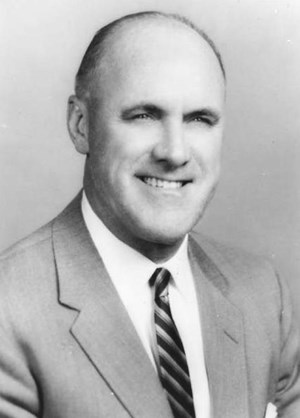
-
Attended Villanova where he was an honorable mention Basketball All-American.
James became the Athletic Director at LaSalle in 1930. Over his35- year tenure at LaSalle, he developed nine varsity sports and help organize crew, making LaSalle on of the first Catholic
colleges to do so. Outside of LaSalle James was a football official for 2 years.
Charles Kelchner
Deceased
Year Inducted:1967
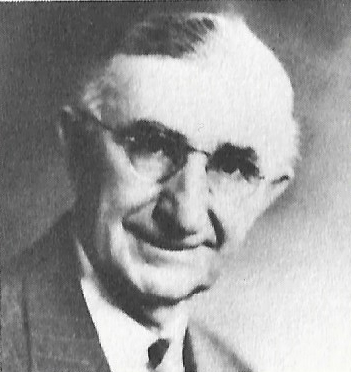
-
Pops graduated from Lafayette College in 1895. He was a member of the faculty at Albright College and head coach of all major sports, he remained there for 21 years turning out some great athletes. He became the General Secretary of the Lebanon Y.M.C.A.. He remained there through 1941, although devoting much of his time to his baseball scouting duties. He then devoted all his time to baseball, scouting and directing tryout camps under the sponsorship of the St. Louis Cardinals. This kept him in close personal contact with college and high school coaches and players.
John B. Kelly Sr
Deceased
Year Inducted:1967

-

One of family of 10 children of Irish Immigrants he was tall and athletic for his age he learned to row in the Schuylkill River. He began working as a brick layer and while excelling in basketball and football he kept his eye on Rowing. He became one of the best rowers in the country, achieving victories in several competitions.
He enlisted in the US Army in WW I, becoming a lieutenant. In 1919 Jack created his own construction company, again while keeping an eye on prestigious rowing competitions. But his registration was refused because he was considered A ”manual worker”. Already a six-time champion in the United States, he stepped up his efforts to prepare for the Olympic events in Antwerp. At Anthwerp, his main rival was Britian’s Jack Beresford and they achieved the two best times in the quarter-final series. They each won their semi-final and faced off in a duel to win the title. The final proved to be memorable, a battle worthy of Homer Beresford firmly takes an early lead until Kelly caught him at 100m from the line and kept a second ahead of him at the finish. At Paris, Kelly and Costello returned to the Olympic stage qualifying for the double sculls final where they proved far superior to their opponents. John B. Kelly’s achievement has never been repeated in the Olympic Games. Four years later Kelly and his cousin Costello returned to the Olympic stage and out-rowed the competition for another gold. Thus Kelly became the first three-time Olympian rowing champion.
Andy Kerr
Deceased
Year Inducted:1967

-
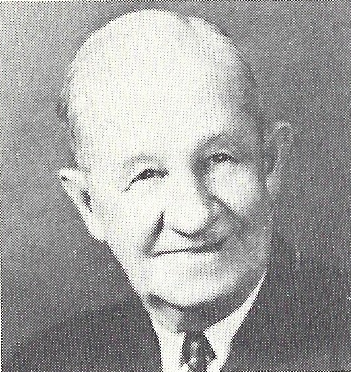
Andy was born in Cheyenne, Wyoming in 1978. His family moved to Carlisle, Pennsylvania. He attended Dickenson College and played three years of Baseball. After graduation he taught mathematics and coached football (a game he never played because he thought he was too small). He moved to Pittsburgh and there caught the eye of “Pop” Warner, the coach at the University of Pittsburgh.
He began his head coaching career as interim head coach at Stanford In 1922 on behalf of Warner who could not contractually move until 1924. He became head coach at Washington & Jefferson College in 1926 -1930. In 1930 he moved to Colgate where he remained for the next 18 years. His teams were outstanding as Kerr built on Warner’s double wing. Their remarkable record included the famous "unbeaten, untied, unscored upon and uninvited” 1932 team which was 9-0 with a points total of 264-0 and not considered good enough for the Rose Bowl. He left Colgate in 1946 because of a mandatory retirement age rule but Coached on at Lebanon Valley College until 1950.
Dr. Hobart Light
Deceased
Year Inducted:1967

-
Dr. Hobart Light played football at Lebanon High School and also played one season of minor league baseball in Syracuse, a farm team for the St. Louis Cardinals. He was a football All American while playing at the University of Pennsylvania and in 1917 played in the Rose Bowl. He also coached football at Lebanon
High School and Lebanon Valley College.
Joseph Michael “Ducky" Medwick
Deceased
Year Inducted:1967

-
Ducky began his professional baseball career in 1930 with the Scottdale Scotties of Scottdale, PA in the Middle Atlantic League. His hard charging skilled play in Left Field earned him a contract with St Louis Cardinals in 1932. In 1934, he hit .319 with 18 home runs and 106 RBI’s. He won the Triple Crown in 1937; hitting .374, 31 HR and 154 RBI’s. His home run total Only equaled Roger Hornsby’s because he hit one in a game that was didn’t count because the game forfeited. His career totals were; a .324 batting average, 205 home runs and 1,383 runs batted in. He was the National League’s MVP in 1937 and was an All-Star ten times. He was elected to Baseball’s Hall of Fame in 1968 and was in the St. Cardinal’s inaugurate Hall of Fame Class in 2014.
William "Tiny" Parry
Deceased
Year Inducted:1967

-
William W. “Tiny” Parry started with the Lebanon Daily News in 1920, left, then returned to become the sports editor for the Lebanon Daily News in 1933, a position he held until 1971 when he retired at the age of 72. During that time he was involved in numerous local and statewide sports activities.
He was the long time president of the Hershey Bears Writers and Broadcasters organization, helped start the Lebanon YMCA Gold Medal Basketball Tournament and was the public address announcer for the Fredericksburg Chix baseball team that was a Class D team for the St. Louis Cardinals.
Parry also did the public address announcing for area auto races including the AAA Major Races in the South and East.
In 1963 he was inducted into the American Legion Dept. of Pennsylvania Sports Hall of Fame and that same year became the president of the newly formed Central Chapter of the Pennsylvania Hall of Fame until 1969.
Despite not attending Lebanon Valley College, he was inducted into the college’s Hall of Fame in 1979 for his extensive coverage of its sports programs.
Eddie Pollock
Deceased
Year Inducted:1967

-
Carl "The Gray Fox" Snavely
Deceased
Year Inducted:1967

-
Carl Gray “The Gray Fox” Snavely served as the head football coach at Bucknell University, the University of North Carolina at Chapel Hill, Cornell University and Washington University In St. Louis, compiling a college record of 180- 96-16 during a 32-year coaching career. During his tenure at Cornell he led his teams to three Ivy League titles and the 1939 Lambert Cup. While at Cornell he became the first coach to use film as a coaching technique. His record at Cornell was 46-26-3. Carl was inducted into the National Football Hall of Fame In 1965.
Maurice Stokes
Deceased
Year Inducted:1967

-
Maurice gained fame as a phenomenal high school player at Pittsburgh’s Westinghouse, graduating in 1951. He achieved college stardom at St. Francis College, where he scored 2,282 points. The 6- foot- seven, 270 pound Stokes played three years in the NBA and was rookie of the year in 1956 with the Rochester Royals. His career was cut short by a head injury suffered in the last game of the 1958 season. The injury resulted in a form of sleeping sickness that left him paralyzed until his death at the age of 36 in 1970.
Hon. Leo Weinrott
Deceased
Year Inducted:1967

-
Jaros "Johnny" Weissmuller
Deceased
Year Inducted:1967

-
Austro-Hungarian-born American competition swimmer, water polo player and actor. He was known for playing Edgar Ross Burroughs’ Ape man Tarzan in films of the 1930s and 1940s and having one of the best competitive swimming records of the 20th century. Weissmuller was one of the world’s fastest swimmers in the 1920s. Winning five Olympic Gold Medals for swimming and one bronze for water polo. He was the first to break the one- minute barrier for 100- meter freestyle, and the first to swim 440-yard freestyle under five minutes. He won 52 U.S. national championships, set more than 50 world records and was purportedly undefeated in official competition for the entirety of his competitive career After retiring from competitions, he became the 6th actor to portray Tarzan.
General George "Mike" Wilson
Deceased
Year Inducted:1967

-
Mike Wilson began the 1926 season scoring touchdowns and ended with 20 for the year, including a 5- touchdown game against Susquehanna. His heroics led Lafayette to a 9-0 record, with the team scoring 328 points to the opponents 37. Mike was an NEA All-American in 1926. Meanwhile, he earned three letters in baseball and one in wrestling. He played one year of pro football with the Frankford Yellowjackets in the NFL.
He joined the Marines in World War II and rose to the rank of Brigadier General. He saw decorated action on Guadalcanal, Saipan and Tinian.
Glenn S. "Pop" Warner
Deceased
Year Inducted:1966

-
One of the most successful coaches in college football history and a member of the College Football Hall of Fame, Glenn "Pop" Warner received his start at the University of Georgia then went to Cornell to coach in 1897 then two years later to the Carlisle Indian School in Carlisle, Pa. In five years, he transformed the school into a national power, amassing a record of 11-2-1 in 1903. After spending three more years at Cornell, he returned to Carlisle in 1907. His return coincided with the arrival of Jim Thorpe, generally considered the greatest athlete of the first half of the twentieth century. In 1915, lured by a higher salary and better facilities, he took over the University of Pittsburgh program, remaining through the 1923 season. Four of his teams went undefeated. In 1924 he moved to Stanford University in Stanford, California, where he coached the team to three Rose Bowl Championships and went undefeated in 1926. Warner finished his career at Temple University in Philadelphia where he coached from 1933 to 1938. After winning just Three of ten games in 1938, Warner was forced to retire, finishing with an overall record of 319-106-32. During Warner's forty-four years as a head coach he introduced many innovations to the game: including the spiral punt; naked bootleg; double reverse; three -point stance; screen pass; single-and double-wing formations; the numbering of player’s jerseys; the employment of shoulder pads, thigh pads, lightweight uniforms, and safer helmets; and the use of blocking sleds and tackling dummies at practice.
Robert "Bob" Allman
Deceased
Year Inducted:1966

-
Bob lost his eyesight at the age of four as the result of an accident. He attended the
Overbrook School for the Blind in Philadelphia where his academic and athletic
achievements won him a scholarship to the University of Pennsylvania. He won the the
Middle Atlantic A. A. U. Championship, Finalist in the Eastern Intercollegiate Championships
for three years. Elected captain of the University Wrestling team, and was awarded the Phi
Beta Kappa key for academic achievement.
Lester R. Bell
Deceased
Year Inducted:1966
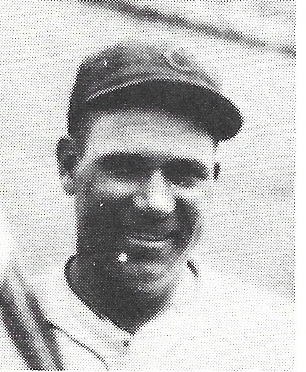
-
Lester started his baseball career in 1922 in Lansing, Michigan. In 1934 he started with the Houston Texans and was brought up to the St. Louis Cardinals. In 1924, he started with the Cardinals but was shipped out later to the Milwaukee team in the American Association. In 1925-’26-’27 he was with The Cardinals and was on the team that beat the New York Yankees four games to three in the 1926 World Series. His baseball journey continued as he was traded to Boston Braves in 1928 and spent 1930 and’31 with the Chicago Cubs. His lifetime batting average was .290.
William "Billy" Conn
Deceased
Year Inducted:1966
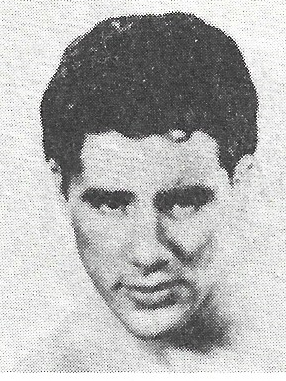
-
In the Heavyweight championship fight for the Title in 1941 Conn, a light-heavyweight, was far ahead of Heavyweight Champion Joe Lewis before being knocked out in the 13th round.
Return to Inductee at a Glance main page.